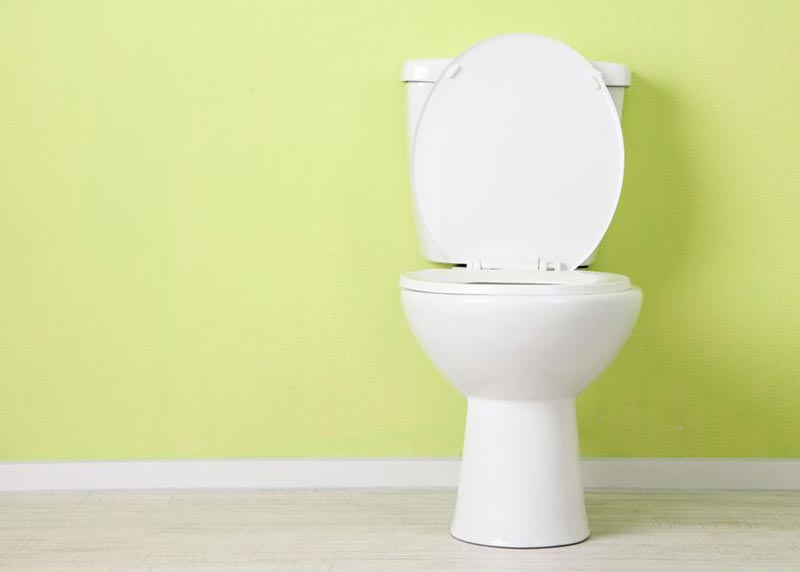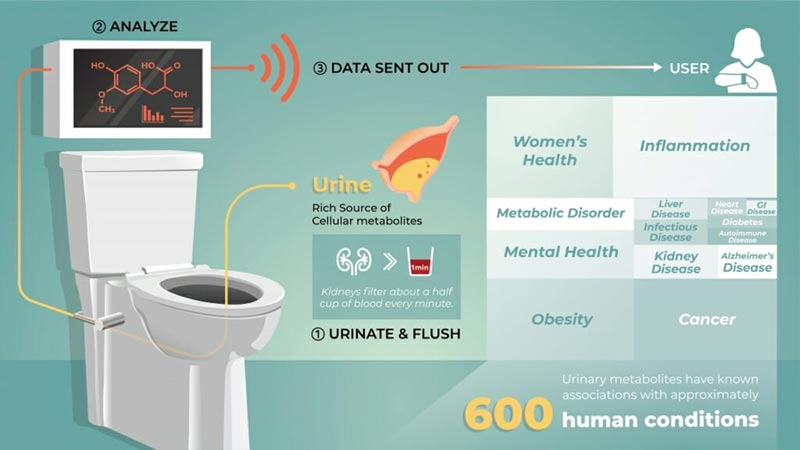
Smart toilets may be the next big thing in smart technology for use in healthcare.
At least that the plan of a research and development team of metabolism scientists at the University of Wisconsin–Madison and the Morgridge Institute for Research, who are working towards creating a toilet that can decode the abundant metabolic health information contained in urine to provide insight into user health.
“A virtual liquid history…”
According to the university’s website, urine contains “a virtual liquid history of an individual’s nutritional habits, exercise, medication use, sleep patterns and other lifestyle choices” Urine also contains metabolic information connected to more than 600 conditions, including cancer, diabetes and kidney disease.
The research team is reportedly asking whether frequent monitoring and testing of urine samples gleans useful real-time information about an individual’s health, as well as whether a technology platform can be created to make the collection process simple, accurate and affordable.
Study finds samples reveal real-time information
A small pilot study conducted this year by UW–Madison professor of chemistry and biomolecular chemistry, Joshua Coon, and Ian Miller, a data scientist with the Coon research group, yielded some insight into to the first question. The authors conducted the study on themselves, collecting 110 urine samples over a 10-day period and submitting them for a complete readout of their metabolic signatures. They also used wearable technology to track their heart rates, daily steps, calorie consumption, and sleep patterns.
Coon and Miller found that the samples did contain useful real-time information. For example, the urine showed changes in biomarkers with a connection to coffee and alcohol consumption, as well as a spike in ion intensity when one subject took acetaminophen. They were also able to measure the metabolic outputs from exercise and sleep.
Designing a smart toilet that can recognize individuals
The team is now designing a “smart toilet” that can recognize individuals and process samples from a variety of subjects, with plans to install the toilet in their research building and expand the user group.

“We’re pretty sure we can design a toilet that could sample urine. I think the real challenge is we’re going to have to invest in the engineering to make this instrument simple enough and cheap enough. That’s where this will either go far or not happen at all.”
Many potential applications
The researchers believe there are many potential applications for the technology. Among them are testing how an individual metabolizes different types of prescription drugs, and testing whether people are taking medications properly and if they’re having the desired effect.
Coon also believes the smart toilet could have major population health implications. “If you had tens of thousands of users and you could correlate that data with health and lifestyle, you could then start to have real diagnostic capabilities,” he said. He also said it might provide early warning of viral or bacterial outbreaks.
Coon told Digital Trends, “Wearable devices that collect data continuously are disrupting healthcare in a positive way. However, they primarily rely on heart rate and step count. Toilet sampling of urine in the way we describe could monitor hundreds of compounds that can directly report on your metabolic health and lifestyle.” For example, he said, the measurements could inform on everything from chemical exposures to consumer products to metabolites indicative of inflammation.
Clear applications for the spa of the future
The technology has clear applications across the health and wellness sector, and for the spa of the future, as discussed in Spa Executive’s report on the topic.
In the report, futurist James Canton predicted, “A fusion of next generation wellness and health informatics is going to create a new era for spas. The information to which we will have access will allow spas to design personalized programs for enhancement and prevention. If I’m going on vacation for a week to a spa, I want to get to the next level of my health and wellbeing. I don’t want to just lose a few pounds, or just relax. I’d like to get some insight so I can live an extra, vital 20, 30 or more years.”
 We’ve released our spa and wellness trends to watch for 2020. Sign up for Spa Executive’s newsletter and download the free report! CLICK HERE >>
We’ve released our spa and wellness trends to watch for 2020. Sign up for Spa Executive’s newsletter and download the free report! CLICK HERE >>
Spa Executive magazine is published by Book4Time, the world’s most innovative spa, salon, wellness, and activity management software. Learn more at Book4Time.com.



